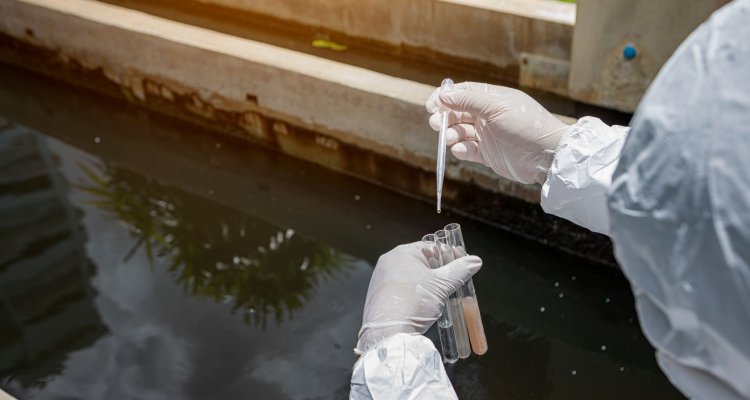
News
Purifying water at its source: pharmaceuticals and antimicrobial resistance removal in hospitals and healthcare centers
Pharmaceutical residues, including antibiotics and antidepressants, are increasingly being released into the sewer network. Removing all traces of these substances proves to be a challenging task. Many pharmaceuticals are in low concentrations and are resistant to degradation through conventional treatment methods used in most wastewater treatment plants. Therefore, these compounds stay in the effluent streams and accumulate in the aquatic environment. In collaboration with various partners, including hospitals, water boards and technology providers, Wageningen Food and Biobased Research has initiated research to develop decentralised solutions to monitor and treat wastewater at the source point of emission of pharmaceuticals and antibiotic resistance.
Tania Mubita Zambrano, a researcher specialized in water purification and project lead, explains, "Initially, we are conducting a comprehensive analysis of the chemical and microbiological components present in the wastewater and evaluating various water treatment technologies to remove these substances." This endeavor does not operate in isolation, as Zambrano emphasizes, "Numerous cutting-edge technologies already exist in this field, but a single technology isn't sufficient. Our research involves collaboration with multiple stakeholders to facilitate the integration of various technologies in a single treatment process to improve efficiency and energy effectiveness. This approach not only targets the removal of pharmaceuticals but also addresses the critical issue of antibiotic resistance in water purification.”
A Holistic Perspective
Tania Mubita Zambrano enthusiastically highlights the benefits of this collaboration, stating, "What's exciting about this partnership is that it allows us to engage with many different aspects of the water treatment process. We work closely with hospitals and care institutions, have the potential to establish real demonstration units in later stages of the research, leverage the best technologies available on the market, and closely monitor the wastewater from our partners. This enables us to gauge the presence of pharmaceutical residues in the water and examine the extent to which healthcare institutions contribute to the spreading of antibiotic resistance.
From Laboratory to Practical Application
The first half of the research period involves laboratory testing, but the ultimate goal is to translate findings into practical use. Tania Mubita Zambrano elaborates, "In the second half of the study, starting around the beginning of 2025, we will demonstrate the effectiveness of these technologies at selected hospitals or healthcare institutions among our partners."
Promoting Sustainable Water Purification and Safe Drinking Water
If the practical testing proves successful, it will lay the foundation for further research. This development holds significant importance for wastewater treatment plants, as they face the growing responsibility of ensuring sustainable water provision while dealing with removing persistent contaminants. Additionally, it contributes to the sustainability of the healthcare sector. Reducing the entry of pharmaceuticals into the broader water purification system also mitigates the risk of unwanted substances in drinking water sources. Lastly, this helps to prevent the spread of antimicrobial resistance.